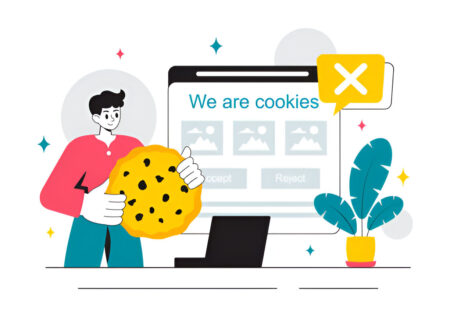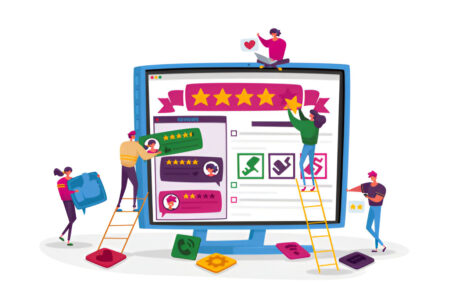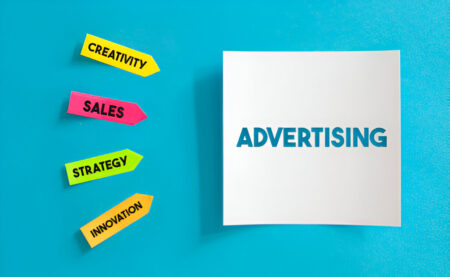As we approach 2025, the digital marketing landscape is evolving faster than ever. With more than 2.9 billion active users each month, Facebook is a strong platform for advertisers. It helps them reach their target audience and achieve clear results.
But how do you ensure every dollar spent on Facebook ads delivers a strong return on investment (ROI)? The answer lies in asking the right questions and crafting a data-driven strategy.
In this comprehensive guide, we’ll explore 24 essential questions to refine your Facebook ad strategy for 2025. Whether you are an experienced marketer or new to the field, these tips will help you create effective ad campaigns. They will grab attention, increase conversions, and boost your return on investment (ROI).
Why Planning Your 2025 Facebook Ad Strategy Matters

Facebook advertising is no longer just about boosting posts or running generic ads. With increasing competition and evolving algorithms, strategic planning is critical to stand out. By 2025, advertisers will need to focus on:
Personalization: Tailoring ads to individual user preferences.
Automation: Leveraging AI-driven tools for ad optimization.
Cross-Platform Integration: Combining Facebook ads with Instagram, Messenger, and WhatsApp for a seamless experience.
Privacy-Centric Marketing: Adapting to iOS updates and data privacy regulations.
Now, let’s dive into the 24 key questions that will shape your 2025 Facebook ad strategy.
1. Who Is Your Target Audience?

Understanding your audience is the foundation of any successful ad campaign. Start by creating detailed buyer personas that include demographics, interests, behaviors, and pain points.
Example: If you’re selling fitness gear, your target audience might include:
Demographics: Men and women aged 25-40.
Interests: Gym memberships, healthy eating, and home workouts.
Pain Points: Lack of time for gym visits or affordable equipment.
Actionable Tip: Use Facebook’s Audience Insights tool to refine your targeting. For example, if 70% of your audience likes home workout content, adjust your ads to show home fitness options.
2. What Are Your Campaign Goals?

Define clear, measurable goals using the SMART framework (Specific, Measurable, Achievable, Relevant, Time-bound).
Example Goals:
Increase website traffic by 20% in Q1 2025.
Generate 500 leads from a new product launch campaign.
Achieve a 5x ROI on ad spend within six months.
Actionable Tip: Break down your goals into smaller, actionable steps. For example, if your goal is to generate 500 leads, aim for 125 leads per month by targeting specific audience segments.
3. How Can You Leverage Past Campaign Data?

Analyze past campaigns to identify what worked and what didn’t. Look at metrics like CTR (Click-Through Rate), CPC (Cost Per Click), and conversion rates.
Example: If video ads have a higher CTR than image ads in 2024, spend more on video content in 2025.
Actionable Tip: Use Facebook’s Ads Manager to export campaign data and create a performance report. Identify trends, such as which ad creatives or audience segments performed best.
4. What Budget Allocation Strategy Works Best?

Divide your budget based on campaign priorities. Allocate more funds to high-performing ad sets and test new strategies with a smaller portion.
Example: If retargeting campaigns yield a higher ROI, allocate 60% of your budget to retargeting and 40% to prospecting.
Actionable Tip: Use Facebook’s Campaign Budget Optimization (CBO) to automatically distribute your budget across high-performing ad sets.
5. How Can You Use Facebook’s Ad Tools Effectively?

Facebook offers powerful tools like Ads Manager, Custom Audiences, and Lookalike Audiences. Use these to optimize targeting and ad delivery.
Example: Use Lookalike Audiences to find new customers similar to your best-performing existing ones.
Actionable Tip: Combine Custom Audiences with Lookalike Audiences to create a layered targeting strategy. For instance, target users who visited your website (Custom Audience) and their lookalikes (Lookalike Audience).
6. What Type of Ad Content Resonates Most?

Experiment with different ad formats, such as carousel ads, video ads, and collection ads. Focus on creating engaging, visually appealing content.
Example: A clothing brand could use carousel ads to showcase multiple products in a single ad.
Actionable Tip: Test different ad formats with the same audience to see which performs best. For example, run a carousel ad and a video ad simultaneously and compare their engagement rates.
7. How Can A/B Testing Improve Your Ads?

Run A/B tests to compare different ad elements like headlines, images, and CTAs. Use the results to refine your strategy.
Example: Test two versions of an ad—one with a discount offer and another with free shipping—to see which performs better.
Actionable Tip: Use Facebook’s Split Testing feature to automate A/B tests and ensure accurate results.
8. What Metrics Should You Track?

Monitor key performance indicators (KPIs) like ROAS (Return on Ad Spend), CPM (Cost Per Thousand Impressions), and engagement rates.
Example: If your ROAS is below target, adjust your targeting or creative elements.
Actionable Tip: Set up a dashboard in Facebook Ads Manager to track your KPIs in real time. Focus on metrics that align with your campaign goals.
9. How Can You Stay Ahead of Competitors?

Analyze competitors’ ad strategies using tools like AdEspresso or Facebook Ad Library. Identify gaps and opportunities in their approach.
Example: If competitors are using influencer marketing, consider partnering with micro-influencers in your niche.
Actionable Tip: Create a competitor analysis report that includes their ad creatives, targeting strategies, and engagement rates. Use this data to refine your own strategy.
10. How Can User-Generated Content (UGC) Boost Engagement?

Encourage customers to share photos or videos using your products. Feature this content in your ads to build trust and authenticity.
Example: A skincare brand could repost customer testimonials and before-and-after photos.
Actionable Tip: Run a UGC contest where customers share their experiences with your product for a chance to win a prize. Use the best submissions in your ads.
11. How Can Influencer Marketing Enhance Your Strategy?

Collaborate with influencers who align with your brand values. Their endorsement can amplify your reach and credibility.
Example: A fitness brand could partner with a well-known yoga instructor to promote its products.
Actionable Tip: Use tools like BuzzSumo or Influence.co to find influencers in your niche. Look for those with high engagement rates rather than just large followings.
12. How Can You Integrate E-Commerce Platforms?

Sync your product catalog with Facebook to create dynamic product ads (DPAs). These ads automatically showcase products users have viewed or added to their cart.
Example: An online retailer could use DPAs to retarget users who abandoned their carts.
Actionable Tip: Use Facebook’s Commerce Manager to set up your product catalog and automate DPA campaigns.
13. What Role Does Video Content Play?

Video ads are highly engaging and perform well on Facebook. Use them to tell your brand story or demonstrate product features.
Example: A tech company could create a short video showcasing the benefits of its new gadget.
Actionable Tip: Keep videos short (15-30 seconds) and include captions, as 85% of Facebook videos are watched without sound.
14. How Can You Maximize Mobile Advertising Opportunities?

Optimize ads for mobile devices by using vertical videos, concise copy, and clear CTAs.
Example: A food delivery app could run mobile-optimized ads with a “Order Now” button.
Actionable Tip: Use Facebook’s Mobile-Friendly Ad Preview tool to ensure your ads look great on all devices.
15. How Can You Craft a Strong Call-to-Action (CTA)?

Use action-oriented language like “Shop Now,” “Learn More,” or “Get Started.” Place CTAs prominently in your ads.
Example: An e-commerce brand could use “Limited Time Offer: Shop Now” to create urgency.
Actionable Tip: Test different CTAs to see which drives the most conversions. For example, compare “Buy Now” vs. “Shop the Sale.”
16. How Can You Use Retargeting Effectively?

Retarget users who have interacted with your brand but didn’t convert. Use dynamic ads to show them the products they viewed.
Example: A travel agency could retarget users who searched for flights but didn’t book.
Actionable Tip: Segment your retargeting audience based on their level of engagement. For example, create separate campaigns for users who viewed a product vs. those who added it to their cart.
17. How Can You Leverage Seasonal Trends?

Align your ad campaigns with holidays, events, or seasonal trends.
Example: A fashion brand could run a back-to-school sale campaign in August.
Actionable Tip: Plan your seasonal campaigns in advance and create a content calendar to ensure timely execution.
18. How Can You Adapt to Privacy Changes?

With iOS updates and data privacy regulations, focus on first-party data and contextual targeting.
Example: Use Facebook’s Aggregated Event Measurement to track conversions without relying on individual user data.
Actionable Tip: Invest in building your email list and encourage users to opt-in for personalized offers.
19. How Can You Use Chatbots for Engagement?

Integrate Facebook Messenger chatbots to answer customer queries and drive conversions.
Example: A beauty brand could use a chatbot to recommend products based on user preferences.
Actionable Tip: Use tools like ManyChat or Chatfuel to create automated chatbot workflows.
20. How Can You Optimize for Local Targeting?

Use geotargeting to reach users in specific locations.
Example: A restaurant could run ads targeting users within a 10-mile radius.
Actionable Tip: Combine geotargeting with local events or promotions to increase relevance.
21. How Can You Use Storytelling in Ads?

Tell a compelling story that resonates with your audience’s emotions.
Example: A nonprofit could share a story about how donations have impacted lives.
Actionable Tip: Use the hero’s journey framework to structure your ad narrative.
22. How Can You Test New Ad Formats?

Experiment with emerging formats like AR ads or playable ads.
Example: A gaming app could use playable ads to let users try the game before downloading.
Actionable Tip: Allocate 10-15% of your budget to test new formats and measure their performance.
23. How Can You Measure Customer Lifetime Value (CLV)?

Focus on acquiring high-value customers by analyzing CLV.
Example: A subscription-based service could target users with a high CLV potential.
Actionable Tip: Use Facebook’s Customer Lifetime Value metric to identify and target high-value segments.
24. How Can You Stay Updated on Facebook’s Algorithm Changes?

Follow official Facebook blogs and industry experts to stay informed about algorithm updates.
Example: Adjust your strategy if Facebook prioritizes video content in its algorithm.
Actionable Tip: Subscribe to newsletters like Social Media Today or AdWeek for the latest updates.
Conclusion: Unlock Your 2025 Facebook Ad Success
By addressing these 24 key questions, you can create a robust Facebook ad strategy that maximizes ROI in 2025. Focus on understanding your audience, leveraging data, and staying ahead of trends. With the right approach, your Facebook ads will not only capture attention but also drive meaningful results.









2 Comments
Pingback: Facebook Ads Complete Ecosystem | Boost Your Meta Ads
Pingback: 11 Lead Generation Strategies to Get High-Quality Leads